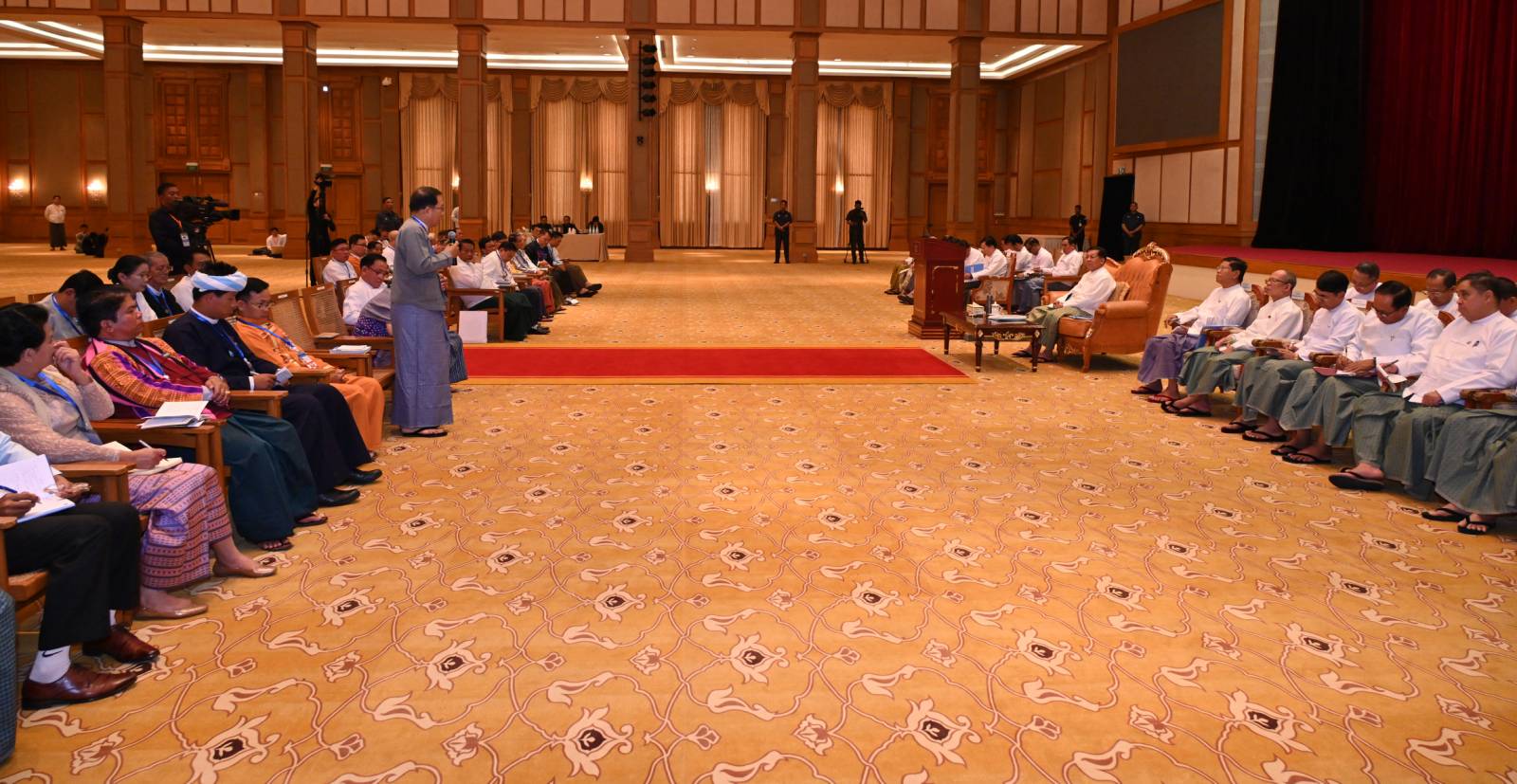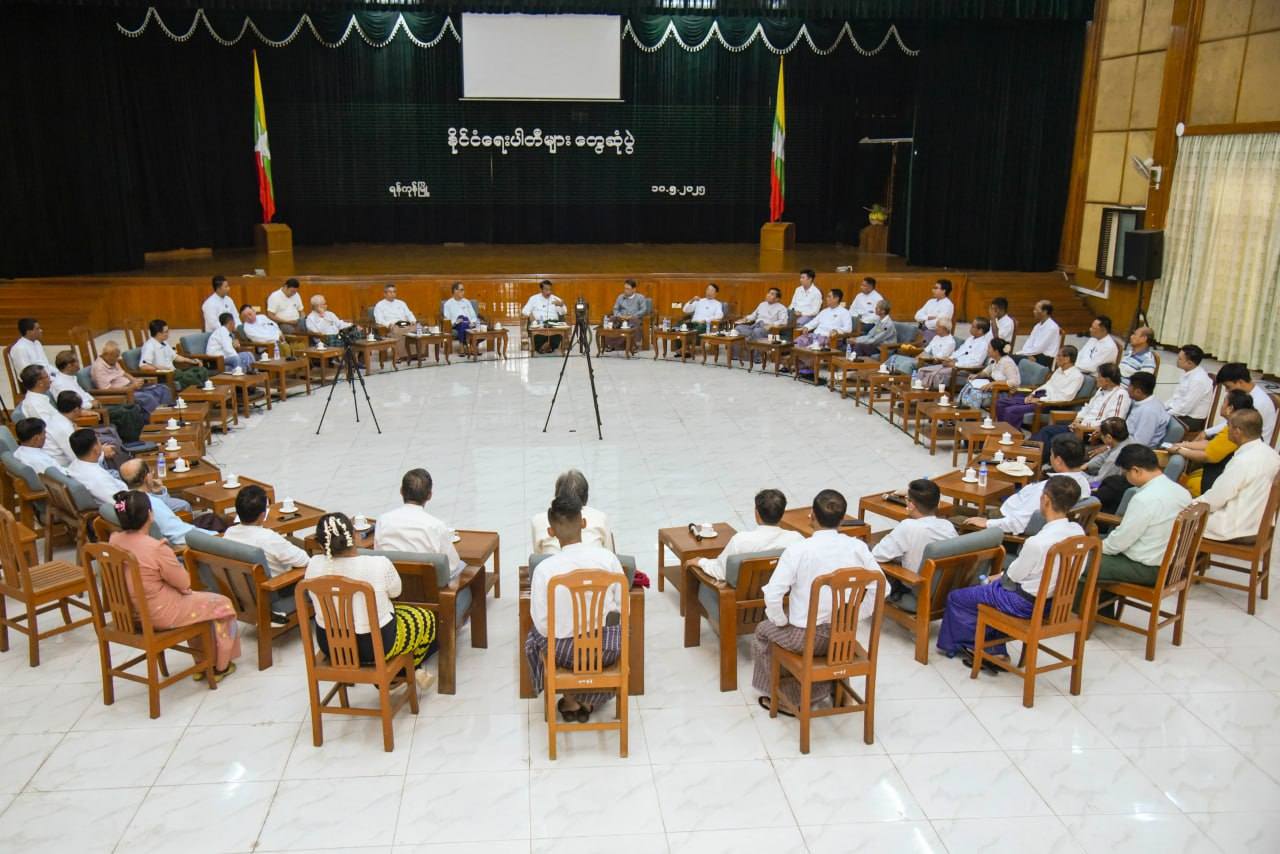CNI News
17 May 2025
Some political parties have pointed out that implementing a one-party system in the current political landscape of Myanmar could further destabilize the country.
There are differences of opinion among political parties regarding whether the military tension and lack of stability in Myanmar are due to the multi-party system and whether the country should be rebuilt with a one-party system.
The lack of stability and the proliferation of armed groups in Myanmar is not due to the implementation of multi-party democracy, but rather to the existence of many armed groups since the era of the previous the Burma Socialist Programme Party that used one-party system, , said Sai Htay Aung, chairman of the Tai Leng (Shanni) Nationalities Development Party (TNDP), to CNI News.
When the one-party system was used in the past, the country did not progress but only regressed. Therefore, if the one-party system is used in the current situation, the country could be further ruined, he said.
“We should only implement a multi-party system. We cannot implement a one-party system. If we implement a one-party system now, the country will be even more ruined. Let’s compare the United States and China. China is implementing a one-party system. If everyone follows the rules and principles, the country will progress. The United States is also implementing a multi-party system, but it is convenient. If we compare the socialist era with today, we can say that the multi-party system is more independent. The public also needs to understand politics well and then become organized. In any system, it is very difficult to build a country if the public does not understand politics. We had been using the one-party system for 24 years. The one-party system was implemented from the adoption of the 1974 Constitution until 1988. Despite this implementation, the country did not progress, but only regressed." said Sai Htay Aung.

While the SAC Chairman was meeting with political parties
After the Myanmar Tatmadaw seized power in 1962, General Ne Win formed the Burma Socialist Program Party and ruled Myanmar under a one-party system until 1988.
Then, in 1988, a massive popular uprising broke out, and the Ne Win government faced the historic 8888 Uprising.
As a result, the Burma Socialist Program Party was also dissolved, and on September 18, 1988, the Myanmar Tatmadaw led by Senior General Saw Maung seized power and formed the State Law and Order Restoration Council (SLORC) to govern the country. Then, on May 27, 1990, a multi-party democratic general election was held.
The SAC chairman said that the elections in December 2025 will be held under a multi-party democracy system, and there is no reason for a one-party system, People's Party (PP) chairman U Ko Ko Gyi told CNI News.

While Senior General Min Aung Hlaing was casting a ballot
“Since they are saying that they will continue to operate under the 2008 constitution, I see that some issues are not controversial. The SAC has already said that they will go with a multi-party democracy system. So I see that it's necessary to implement a multi-party democracy system systematically. In developed countries, multi-party democracy is practiced. I believe that the continuation of the one-party system also depends on the vision and rationality of the leaders," he said.
A one-party system is a system in which a single party, adhering to a single political ideology, governs a country, and the party leader (or the party's central authority) holds the power of the country.
Politicians point out that democracy is a system in which the people choose their representatives to make decisions and govern on their behalf while federalism is a concept in which the rights to work are shared by working together, coexistence, and sharing.




